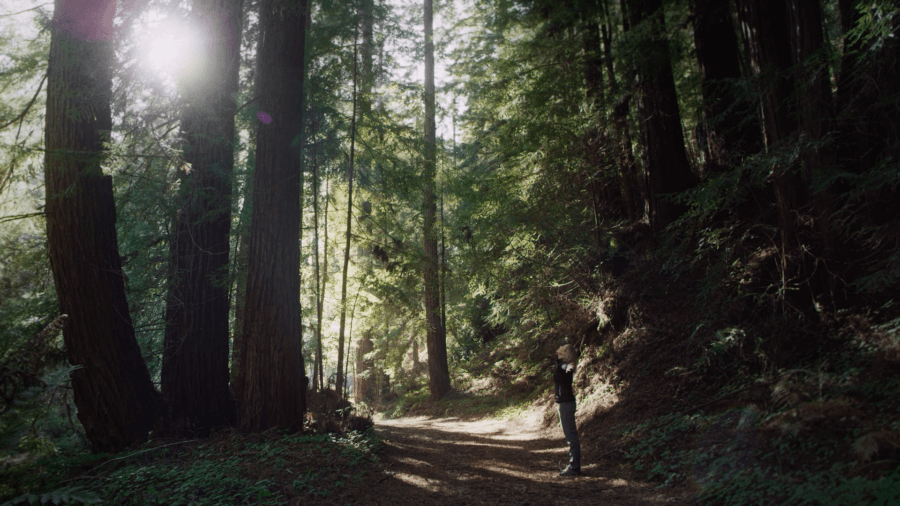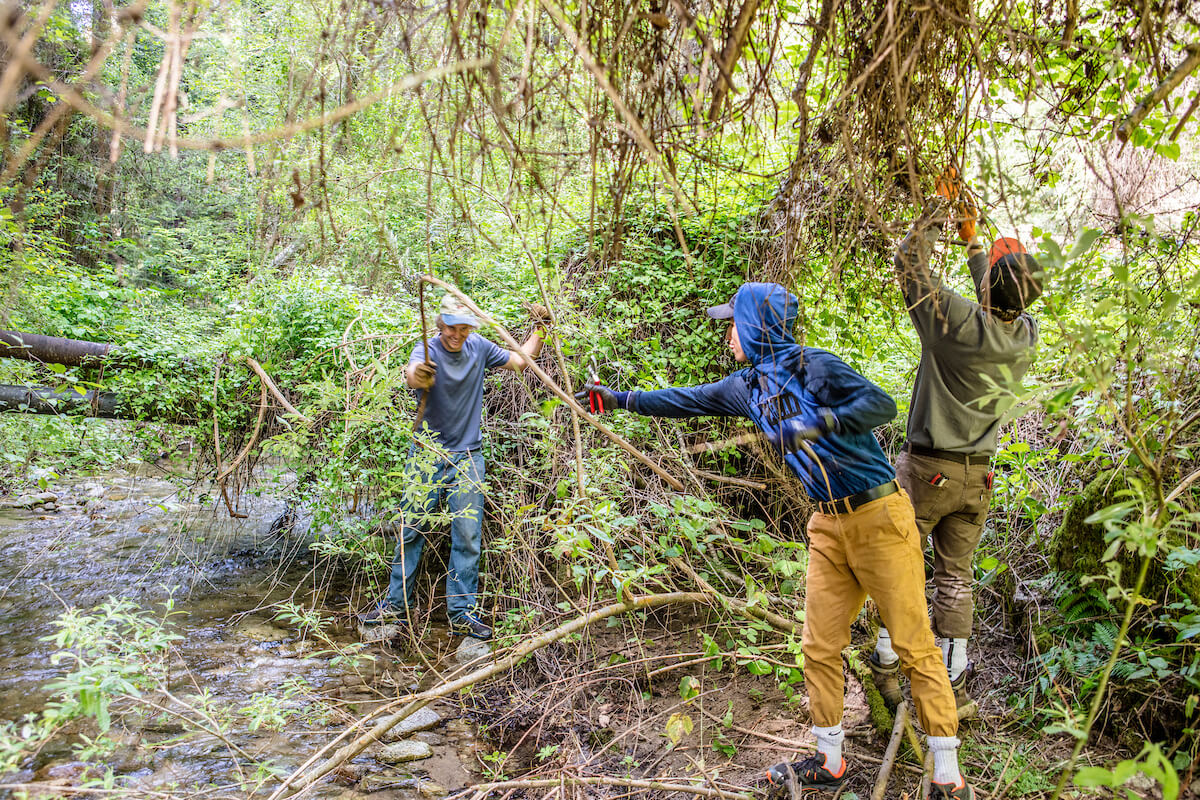Eradicating Non-Native Species at San Vicente Redwoods
Improving Forest and Watershed Health

Redwoods along Mill Creek at San Vicente Redwoods. Photo by Skycar Creative.
Along the lower reaches of San Vicente Redwoods, among the flood plains of Mill Creek and San Vicente Creek, are coast redwood-dominant forests that stretch into the adjacent Cotoni-Coast Dairies unit of the California Coastal National Monument. The forests here are thriving–despite recent drought condition in the region–thanks to the incredibly well-fed creek systems. In 2011, when Sempervirens Fund partnered with Peninsula Open Space Trust, Save the Redwoods League, and Land Trust of Santa Cruz County to purchase, manage, restore, and protect San Vicente Redwoods, the San Vicente watershed was identified as a critical area for restoration management. The watershed is exceptional, but its promise and vitality were limited by impacts such as dams in the upper reaches and non-native species such as Clematis vitalba choking the understories of the redwood forests along the creeks.
Over the last decade Sempervirens Fund and its partners have secured and directed millions of dollars of restoration resources to the region, and the work is paying off. The long-sought removal of the lower dam on Mill Creek in 2021 has released a cascade of critical cobble and sediment that will replenish absent spawning habitat throughout the watershed. Strategic placement of woody debris along the creeks, established over several years, will now capture sediment and generate sandbars and safe havens for spawning Coho salmon and steelhead. And a multi-year, multi-agency effort to eradicate Clematis vitalba has now been successfully completed, reducing the plant’s coverage from 90% to nearly 0% throughout a 30-acre portion of San Vicente Redwoods. The work was critical for the watershed and critical for land managers seeking best practices to manage and eradicate the species.

Along the confluence of San Vicente Creek and Mill Creek, Ian Rowbotham and UCSC interns remove non-native Clematis vitalba plants. Photo by Ian Bornarth.
Clematis vitalba is an extremely aggressive, invasive, non-native plant that grows quickly and spreads easily, creating thick tangled vining vegetation that covers the ground and climbs upwards along the trunks of trees, eventually outcompeting native vegetation and threatening native biodiversity. The vine can grow up to seven times faster than ivy and each plant can produce over 100,000 seeds, which are then spread by wind, water, wildlife, and human interaction. Clematis vitalba can also sprout from stem fragments, making control and eradication particularly challenging.
For the project on San Vicente Redwoods, treatment and monitoring efforts took place from spring 2018 through 2021, and across the four years of treatment the project successfully reduced Clematis vitalba cover and density levels from as high as 90% to near 0% throughout the project area, with subsequent increases in native plant species diversity and cover as well. The work also integrated detailed monitoring into its design to inform adaptive management techniques, and the partners utilized manual removal and judicious herbicide treatment methods for control.
You can read the summary of the successful program here or dive into the full report here.
This program will help the Bureau of Land Management address Clematis vitalba along another 40-acre portion of Cotoni-Coast Dairies further downstream in the San Vicente watershed.
The project and report were made possible by funding from the California Department of Fish and Wildlife (CDFW) through the Water Quality, Supply, and Infrastructure Improvement Act of 2014 (CWC §79707 [g]) and Watershed Restoration Grant Program.

